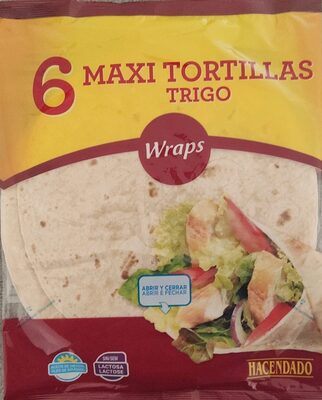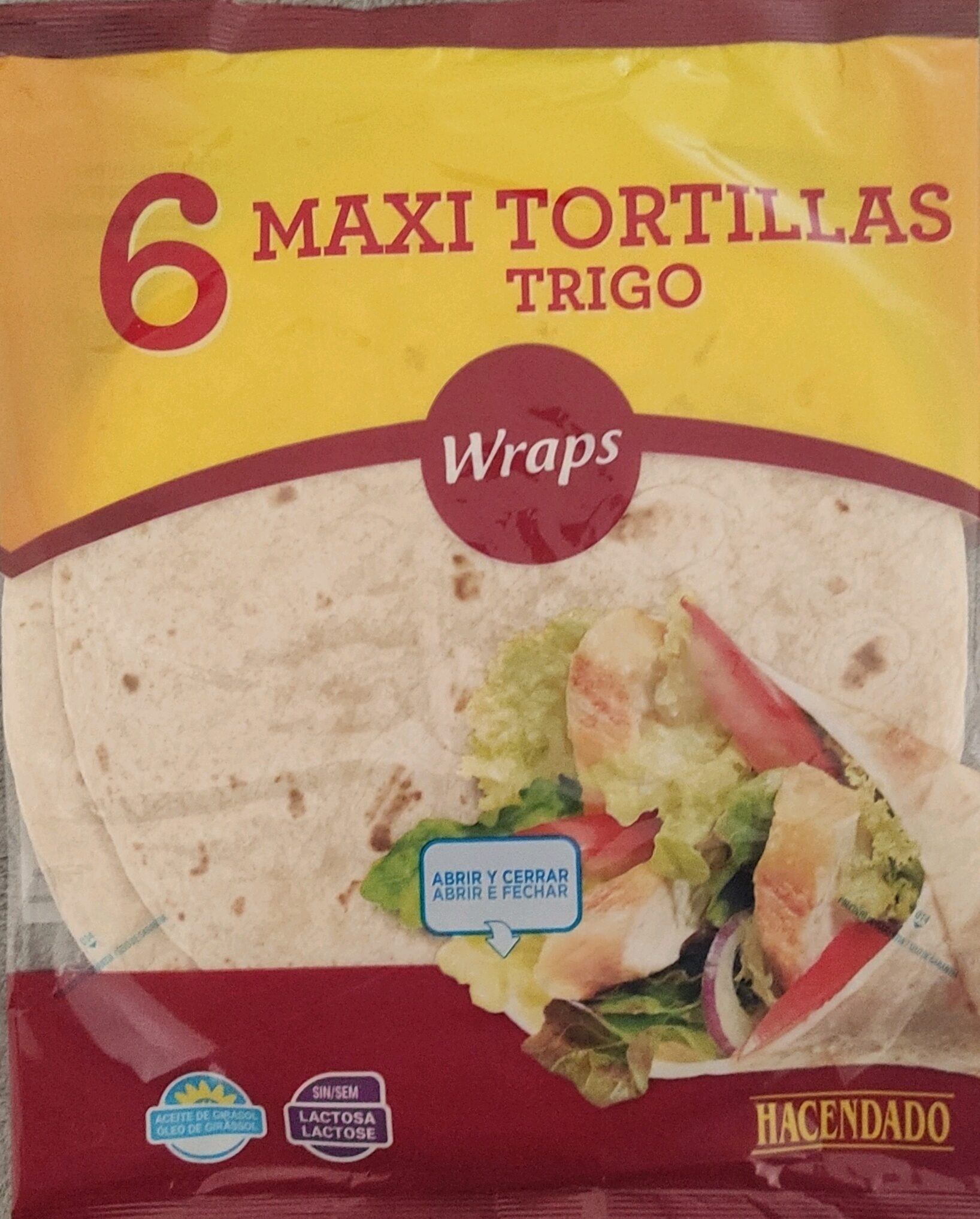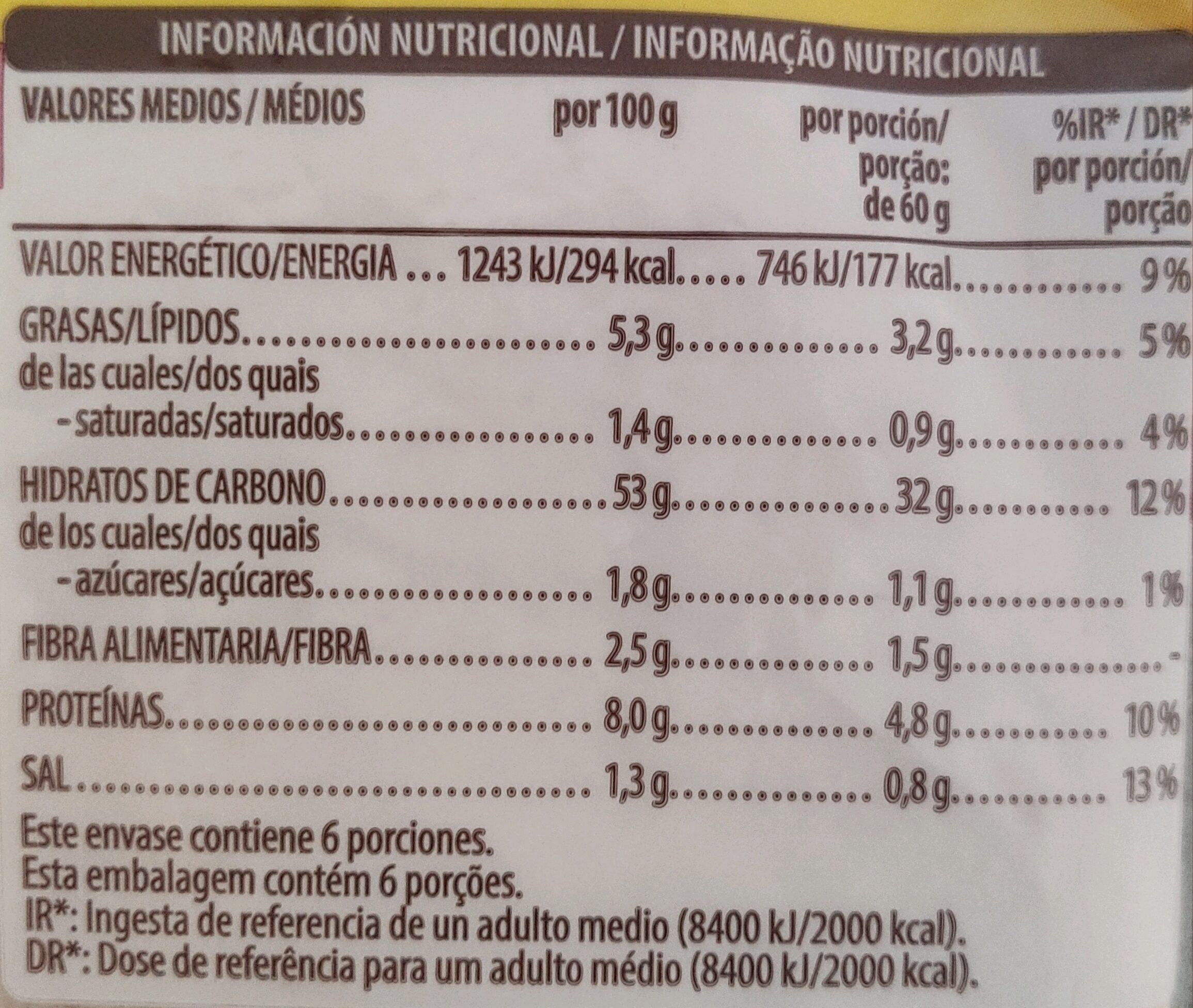Maxi Tortillas Trigo - Hacendado - 360 g (6 x 60 g)
Barcode: 8480000808707 (EAN / EAN-13)
Common name: Tortillas de trigo
Quantity: 360 g (6 x 60 g)
Packaging: Plastic, es:Green dot
Brands: Hacendado
Categories: Plant-based foods and beverages, Plant-based foods, Cereals and potatoes, Cereals and their products, Crêpes and galettes, Breads, Flatbreads, Puffed cereal cakes, Puffed wheat cakes, White breads, Pancakes, Wheat breads, Wheat flatbreads
Labels, certifications, awards:
Green Dot, No lactose, With Sunflower oil, es:Recicla-amarillo

Origin of the product and/or its ingredients: España
Origin of ingredients: Spain
Manufacturing or processing places: Spain
Traceability code: ES 20.43427/V CE
Stores: Mercadona
Matching with your preferences
Report a problem
Data sources
Product added on by kiliweb
Last edit of product page on by macrofactor.
Product page also edited by aleene, alia, crisbj, duhowpi, ecoscore-impact-estimator, inf, jbarcelona, moon-rabbit, musarana, openfoodfacts-contributors, packbot, pushka, roboto-app, tacite-mass-editor, tasja, teolemon, thaialagata, yuka.R1B3bUhyOEFwL29yaDl0bi9BLzAwL2wzbXNhd1VtQzhFOGtKSWc9PQ, yuka.ZnBFNVBicGV2NllXb2NJdXhqZlUrTjRvL0xTM1EwZTRGTFV4SUE9PQ, yuka.sY2b0xO6T85zoF3NwEKvlkdDCIP1_iD_CBfvhUzR2fqycr65f-9c0NCmKKg, yuka.sY2b0xO6T85zoF3NwEKvlkgXf9X3hjzIPCHtpR2Q6PLQI5vhe8N2zLDFH6o, yuka.sY2b0xO6T85zoF3NwEKvlnQXSN3mvW7taEbvtFXX_vmcKoXlOdEr-Jf0Aqs.
Last check of product page on by aleene.













